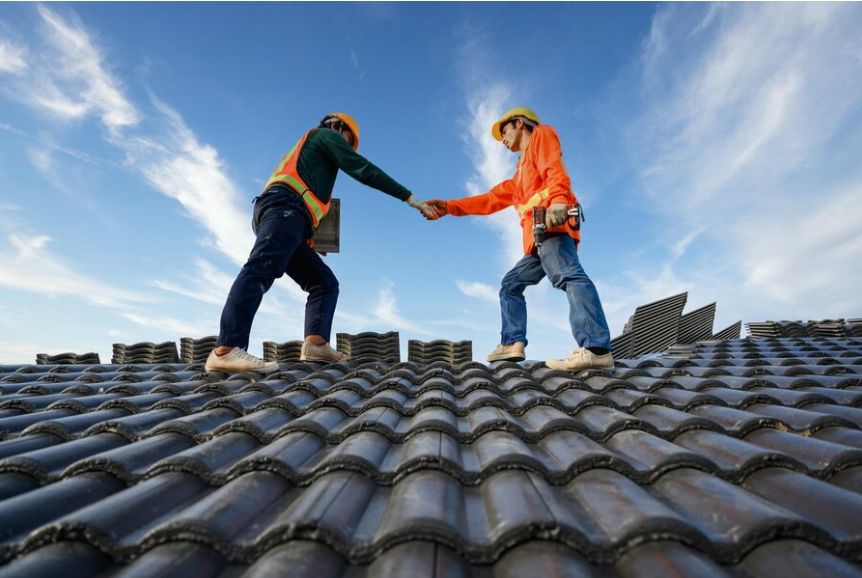Roofs can deteriorate over time due to continuous exposure to weather and get impacted by natural disasters. These factors can cause damage, curling, or moss growth. Currently, extreme weather conditions are increasingly prevalent as a result of global warming.
Roof replacement offers not only enhanced protection but also energy efficiency, reducing utility bills and enhancing the appeal of a property. Since certain roof issues may be unnoticeable during their early stages, it is crucial to schedule biannual roof inspections to ensure the safety and durability of the roof. Let’s explore the top 5 reasons that necessitate roof replacement.
1. Damage due to natural disasters
Natural disasters like heavy winds, downpours, and snowfall can wreak havoc on roofs and other structures. The ability of a roof to withstand such forces depends on two crucial factors: the quality of the materials used and the precision of the installation. Even if there is no obvious damage following a natural disaster, it is vital to have your roof inspected.
To mitigate potential damage, consider taking precautionary measures such as trimming trees that could potentially fall onto your house during a storm. Additionally, ensure proper drainage by regularly clearing debris from your gutters and downspouts. These steps can help safeguard the roof and home from the destructive effects of a natural disaster.
2. Granular loss
Granular loss refers to the gradual erosion or detachment of the small granules found on the surface of asphalt shingles. These granules serve an essential purpose by reflecting the sun’s heat and preventing it from penetrating into the underlying structure of the roof. When granules are lost, it can have several negative effects on the shingles.
This loss typically occurs over time due to prolonged exposure to sunlight and extreme weather conditions. As granules diminish, the asphalt shingles lose their luster and become less effective at providing protection to the roof. Additionally, improper installation of asphalt shingles can accelerate granular loss, leading to premature deterioration of the roofing material. To maintain the integrity and longevity of your roof, it’s important to address granular loss issues promptly and consider proper installation practices.
3. Wetness in the roof
The wooden roof decking, which acts as the support structure for the roof, can be affected by a condition called wood rot, especially if it has been exposed to moisture or wet conditions. This can lead to various problems:
Damp Spots: Exposure to moisture can result in the formation of wet spots on the wooden decking, weakening its structural integrity.
Musty Odor: Rotting wood often emits a musty or damp smell in the affected areas.
Pest Attraction: Moist or rotting wood can attract pests such as termites and ants, further damaging the decking.
Cracks and Deterioration: Wood rot can cause the decking to develop cracks and become brittle, reducing its strength.
Moss and Fungal Growth: The damp conditions created by wood rot can encourage the growth of moss, fungi, and molds on the wood.
Indoor Air Quality: Severe wood rot can negatively impact indoor air quality by introducing allergens and spores into the living spaces.
Interior Damage: If left unaddressed, wood rot can lead to leaks that damage the interior, including walls, ceilings, and personal belongings.

4. Aging
Roofing materials have varying lifespans, which can depend on the brand and the specific conditions of a given roof. Here are some general guidelines for the lifespans of common roofing materials:
Asphalt Shingles: Typically last between 15 to 30 years.
Composition Shingles: Generally have a lifespan of 12 to 20 years.
Wood Shingles: Can last approximately 30 to 40 years.
Rubber Roofs: Typically have a lifespan of 30 to 50 years.
Slate Tile Roofs: These can have an impressive lifespan ranging from 75 to 200 years.
The decision to replace a roof often depends on its age and condition. As a roof approaches or surpasses its expected lifespan, it becomes more vulnerable to damage and may require replacement to maintain the integrity and functionality of the roofing system.
5. Curled Shingles
Curled shingles are a common roofing problem with various causes. Inadequate ventilation in the roof space can accelerate shingle curling and lead to faster roof deterioration. Exposure to moisture before installation can also result in shingle curling, emphasizing the need for proper storing. Additionally, installing new shingles over old ones increases the risk of curling due to the unstable surface provided by the existing shingles.
Conclusion:
Hence, roof replacement becomes a necessary consideration when various issues such as aging, moisture damage, granular loss, curling, and damage from natural disasters arise. The choice of roofing material should be based on factors like the local climate, budget, fire resistance, and more. Prior to proceeding with a replacement, it’s advisable to inquire about the expected duration of the process and any associated noise.
Good Guys Roofing offers top-quality roof replacement services for both residential and commercial properties. As certified CertainTeed shingle masters and Owens Corning preferred contractors, we proudly offer a 50-year warranty. Our team provides swift responses and often completes installations within a day to minimize disruption to your daily life.




